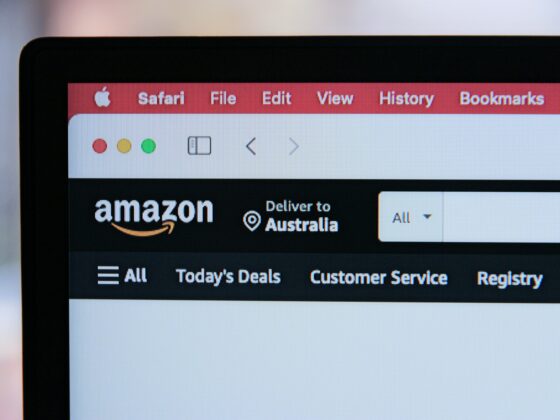
One in five packaged foods and drinks sold in the United States contains synthetic dyes.
That’s according to findings published in June in the Journal of the Academy of Nutrition and Dietetics (JAND).
“We assessed ingredient data for packaged foods and beverages produced by the top 25 U.S. food manufacturers,” lead investigator Elizabeth Dunford said. “We included sales data in our analysis of synthetic dye exposure, which may help to inform regulatory policies in this area.”
As part of the Trump administration’s Make America Healthy Again (MAHA) initiative, the Department of Health and Human Services and the Food and Drug Administration (FDA) is looking to phase out several synthetic dyes from the food supply. This includes red dye No. 3, which is a synthetic food dye made from petroleum that gives foods and drinks a bright, cherry-red color used in certain food products, including candy.
So, what does this mean for convenience stores, especially the candy aisle?
Frank Yiannas, former deputy commissioner at the FDA’s Office of Food Policy and Response (OFPR) told CSP Daily News that the food dye changes will certainly result in many products being reformulated and the likely additional cost to food producers.
“One study has suggested that nearly 20% of all foods found in a supermarket likely contain an artificial food coloring,” Yiannas said. “I suspect that for convenience stores the percentages might be even higher, as some studies have shown that for certain types of foods—many that make up a disproportionate amount of c-store SKUs, it can be as high as 40%.”

Yiannas said it’s hard to predict for certain whether the proposed changes from artificial colors to colors derived from more natural sources will hurt sales.
“Not knowing how they will affect a product’s appeal and the consumers’ reaction to it [is] certainly something that I think we’ll all be watching,” he said.
Regardless, Yiannas said he doesn’t think there will be any extreme or unusually large, sudden or dramatic swings in trends.
“The occasional sweet treat or splurge is something I think most Americans can relate to, and I personally don’t think we’ll see a mass consumer exodus from occasionally enjoying these types of products, treats, or purchases,” he said. “What I learned from many years working in retail, the American consumer is the boss and they vote with their wallet.”
Retailers will do whatever their bosses, “the consumer,” tells them to do based on what they put in their baskets at checkout, Yiannis said.
Consumer packaged goods (CPG) giants Conagra Brands Inc., Nestle USA and J.M. Smucker have added their brands to the growing list of companies pledging to remove artificial dyes from their products. Kraft Heinz also said it would phase out all artificial dyes from its U.S. products by 2027.
Candy concerns
When it comes to volume, the candy segment in convenience is seeing declines, according to Chicago-based market research firm Circana.
Total candy volume declined 4.7% in c-store dollar sales for the 52-week period ending July 13, according to Circana.
“Overall, when we look at convenience, 900,000 less households bought candy in a convenience store this year compared to last year,” Daniel Sadler, vice president of client insights at Circana, told listeners during the Sept. 11 webinar State of the Candy Industry: 2025. “Trips this year for candy in convenience are down about 7.5% and that’s down 9.5% from two years ago.”
Maria Ottone, category manager for center store at convenience-store brand Onvo, Scranton, Pennsylvania, said she is working with brokers and vendors to offer bi-monthly promotions that will still entice customers to see value in the candy aisle.
“Candy costs have been on the rise since the beginning of this year, with another sharp increase coming from a large candy manufacturer in September,“ Ottone said.
When it comes to changes in food dyes, Ottone said most manufacturers are prepared but those who are not could see missed opportunities.
“Many of the top manufacturers are already putting plans in place to change their recipes to accommodate the food dye bans to continue making their top candy product lines and brands,” Ottone said. “Those who do not follow suite will unfortunately pay the price and lose their fan base, who will eventually migrate over to the brands who do manufacture the allowable products.”
Ottone said that there are many new manufacturers and brands that already offer product lines with low sugar and no food dyes that will now have the spotlight to shine if current manufacturers don’t take action.
Looking to the future, Ottone said that the state of the industry is changing.
“I think it’s important to understand that while candy is a big business, the state of the country right now is getting skinny and getting healthy,” she said. “With the rise and availability of weight loss drugs on the market, the consumer is gravitating towards protein packed snacks at their c-store stop, therefore, while we may see a dip in candy and salty snacks, and a potential loss, there is a huge win and growth opportunity in the nutritional/meat snack business.”
Ottone said retailers need to focus on ways to grow that business to compensate for any losses potentially in candy and salty snacks.
As the nutritional industry continues to grow and expand, Ottone is optimistic.
“The innovation never stops,” she said. “The protein packed/low sugar/macro friendly world is reaching candy, which means there’s a place where the two worlds collide and the growing business can lift the other up again.”
According to Circana’s 40th annual Eating Patterns in America report published Sept. 16, consumers are increasingly avoiding artificial sweeteners, colors and ultra-processed foods. The report identifies a “return to purity” trend that is gaining momentum alongside the MAHA initiative and that 28% of adults now avoid artificial sweeteners and 25% avoid artificial colors and flavors.








